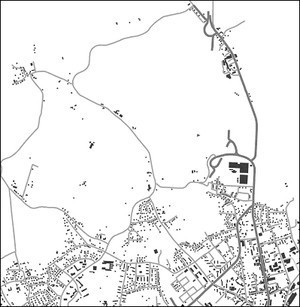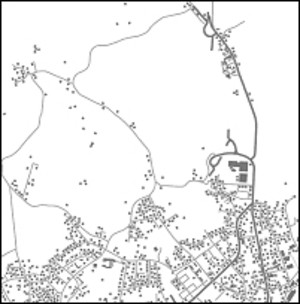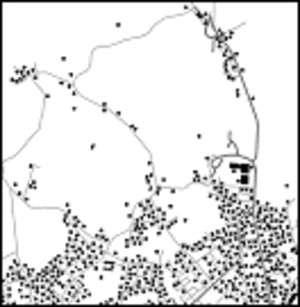Typification refers to the process of reducing a part of a given set of objects while maintaining the spatial distribution of the situation. For example, it is no longer possible to display all buildings on a small scale - so it makes sense to reduce them. However, this reduction cannot take place randomly, but must take into account the spatial distribution of the objects. For this purpose, a method was developed which works on the basis of Kohonen feature maps.
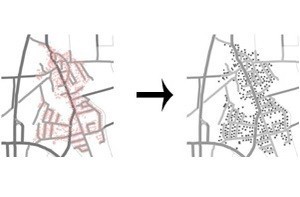


Application for generalization of buildings
Building generalization for scales up to about 1:30,000 can be done by looking at individual buildings and simplifying their geometry (e.g. with the CHANGE program). For smaller scales, however, this would lead to the elimination of a large number of buildings, since all parts of the building would drop below the required minimum sizes.
The program TYPIFY performs a thinning of the data set, followed by a size-dependent symbolization: smaller buildings are represented by symbols (here squares), while larger objects are represented by their original shape.
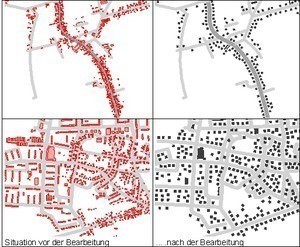


TYPIFY allows an automatic generalization of buildings for any target scale: with increasing reduction, more and more buildings are thinned out and displayed as square symbols. In the figure, buildings from the ALK were automatically generalized for the scales a) 1:25,000, b) 1:50,000 and c) 1:75,000.
